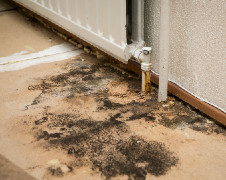What is Mold?
Mold is a living organism that belongs to the fungi kingdom (like mushrooms, yeast, and mildew). It breaks down dead plant matter, and holds medicinal value.
Mold may have its place in nature, but problems can arise when it contaminates our homes - it can become a persistent intruder we are constantly trying to get rid of.
So where does mold grow in the home? The EPA's Mold Course has identified common causes you should know.
The Top 4 Most Common Places for Mold Growth In Your Home
Basements:
Most basements are sub terrain due to their foundational function for the home; however, they have all the right conditions for mold growth: Constant damp environments that typically stay humid, and don't get a lot of air circulation. If your property is frequently and easily flooded, water can seep through tiny cracks in the foundation, or intrude your basement's doorway/window. Trapped moisture then evaporates, which elevates humidity, and provides a perfect place for mold to invade.
Bathrooms/Showers:
There's obviously plenty of water and humidity in the bathroom. Because moisture is constantly part of its environment, your bathroom may never completely have the opportunity to return to normal humidity levels. Steam from the shower or a hot bath also makes the bathroom more humid. When the water in the bathroom does dry out, it evaporates into the air and increases the humidity. Bathrooms are typically not well ventilated, so the humidity tends to linger, becoming a perfect place for mold to survive.

